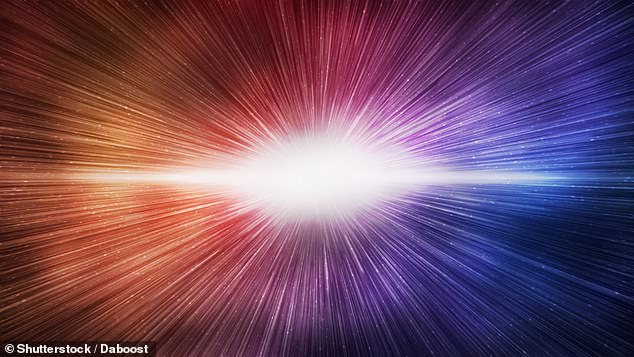NASA discovers the OLDEST supermassive black hole yet: a void from the beginning of the universe ‘eats’ its host galaxy to death
- Astronomers have discovered the oldest black hole ever
- It dates from 400 million years after the Big Bang, more than 13 billion years ago
Astronomers have discovered the oldest black hole ever observed – from the beginning of the universe – and it is ‘eating’ its host galaxy.
The international team, led by the University of Cambridge, used the James Webb Space Telescope to detect the black hole by looking back in time.
The black hole dates from just 400 million years after the Big Bang, which took place more than 13 billion years ago, and is surprisingly large: a few million times the mass of our Sun.
And the fact that it was so big so early in the universe’s history challenges experts’ assumptions about how black holes form and grow.
Astronomers believe that the supermassive black holes at the centers of galaxies like the Milky Way have grown to their current size over billions of years.
Astronomers have discovered the oldest black hole ever observed – from the beginning of the universe – and it is ‘eating’ its host galaxy (stock image)
But the size of the newly discovered black hole suggests that they can form in other ways too: they can be “born large” or they can eat matter at a rate five times faster than previously thought possible.
According to standard models, supermassive black holes form from the remains of dead stars, which collapse and can form a black hole about a hundred times the mass of the Sun.
If it were to grow as expected, it would take about a billion years for this newly discovered black hole to reach its observed size.
However, the universe was far from a billion years old when this black hole was discovered.
“It’s very early in the universe to see a black hole of this size, so we have to think about other ways they could form,” says Professor Roberto Maiolino.

The black hole dates from just 400 million years after the Big Bang, which happened more than 13 billion years ago, and is surprisingly massive – several million times the mass of our Sun (stock image)
“Very early galaxies were extremely gas-rich, so they could have been a kind of buffet for black holes.”
Like all black holes, this black hole would have devoured material from its host galaxy, called GN-z11, to fuel its growth.
Yet this ancient black hole appears to be a much more powerful gobbler of matter than its siblings in later epochs.
Over time, this could stop the process of star formation, slowing the death of the galaxy and the black hole’s food source, killing the black hole itself.
Experts said it is impossible to know what the black hole or its host galaxy looks like today because it takes so long for light from so far away to reach us.
The findings have been published in the journal Nature.
